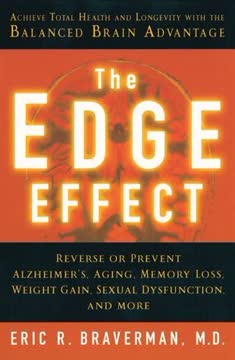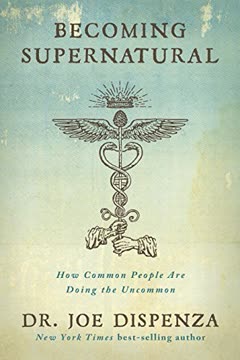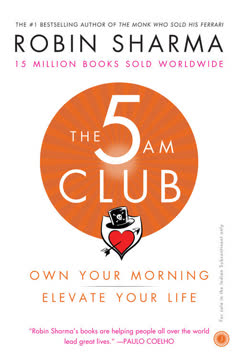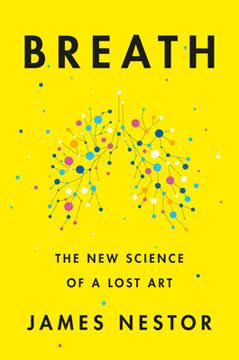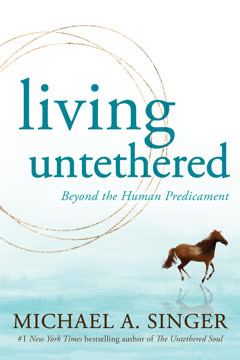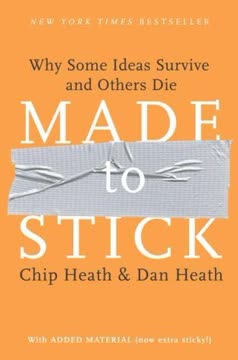Key Takeaways
1. The Brain-Body Connection: The Edge Effect
When our edge fails, we fail.
The Brain as the Control Center. The book emphasizes that the brain is the key to overall health, acting as the central control system for the body. It challenges the traditional medical model of treating symptoms in isolation, advocating for a holistic approach that prioritizes brain health as the foundation for well-being. The brain's influence extends to every aspect of our physical and mental state, making it essential to address brain imbalances when seeking to improve health.
The Edge Effect Defined. The "Edge Effect" refers to the critical connection between the brain and the body. It's the point where the brain's electrical and chemical signals are translated into physical and mental functions. When this connection is strong and balanced, we experience optimal health and performance. However, when imbalances occur, the Edge Effect amplifies these deviations, leading to a cascade of health problems.
Mastering the Edge. By understanding and mastering the Edge Effect, individuals can take control of their health by influencing the brain's signals to the body. This involves identifying and addressing imbalances in brain chemistry, which can be achieved through various methods, including diet, exercise, supplements, and medical interventions. The ultimate goal is to restore and maintain a balanced brain, leading to improved physical and mental well-being.
2. Understanding Your Brain's Electrical Blueprint
Just as you need a battery to start your car, the human body relies on electricity to stay alive.
The Role of Electricity. The book highlights the importance of electricity in the human body, particularly in the brain. It explains that the brain generates electrical signals that travel throughout the body, influencing various functions and processes. These electrical signals are essential for maintaining consciousness, coordinating movements, and regulating internal systems.
Four Key Measurements. The book identifies four key measurements to assess the brain's electrical activity:
- Voltage: Measures the power or intensity of the brain's response to stimuli.
- Speed: Refers to the rate at which electrical signals are processed in the brain.
- Rhythm: Describes the smoothness and consistency of electrical flow in the brain.
- Synchrony: Represents the balance and coordination of different brain waves.
Neurons and Synapses. The brain's electrical activity is facilitated by neurons, specialized cells that transmit information through electrical and chemical signals. Neurons communicate with each other across synapses, tiny gaps between cells. Neurotransmitters, biochemicals that carry signals across these gaps, play a crucial role in the flow of electricity and information in the brain.
3. The Four Neurotransmitter "Natures"
Together, these four chemicals make up the brain’s code, much like the four base chemicals found in pairs on a DNA strand.
The Brain's Biochemical Code. The book introduces four primary biochemicals that play a central role in brain function and overall health:
- Dopamine: Associated with energy, motivation, and reward.
- Acetylcholine: Linked to memory, creativity, and cognitive speed.
- GABA: Promotes calmness, relaxation, and emotional stability.
- Serotonin: Regulates mood, sleep, and appetite.
Dominant Neurotransmitters. Each individual has a dominant neurotransmitter, which influences their temperament, personality, and physical tendencies. This dominant neurotransmitter shapes their "nature," a term used to describe their unique combination of physical, mental, and emotional characteristics.
Biochemical Deficiencies. Imbalances in these neurotransmitters can lead to various health problems. Deficiencies in one or more neurotransmitters can result in a range of symptoms, including fatigue, memory loss, anxiety, and mood disorders. Understanding your dominant nature and identifying any deficiencies is crucial for developing a personalized plan to restore balance and improve health.
4. Recognizing When You're Losing Your Edge
The moment you realize that something is off, you have already begun to lose your edge.
Subtle Shifts in Health. The book emphasizes the importance of recognizing subtle shifts in health as early warning signs of brain imbalance. These shifts may not always be obvious physical symptoms but can manifest as changes in mood, energy levels, or cognitive function. Ignoring these early warning signs can lead to more significant health problems down the road.
The Edge Checklist. The book provides a checklist of common symptoms and conditions that may indicate a loss of edge. These include:
- Physical symptoms: Fatigue, insomnia, digestive complaints, headaches.
- Personality issues: Mood swings, irritability, anxiety, difficulty managing anger.
- Memory issues: Forgetfulness, distractibility, difficulty concentrating.
Self-Medication. Many people unknowingly attempt to self-medicate when they start losing their edge. This can involve unhealthy habits such as consuming excessive amounts of caffeine or sugar, relying on alcohol to relax, or using drugs to boost energy or mood. While these strategies may provide temporary relief, they ultimately exacerbate the underlying brain imbalance and lead to further health problems.
5. The Brain Domino Effect: How Imbalances Cascade
In most instances, I see that first domino falling as a result of brain imbalance.
Interconnected Symptoms. The book introduces the concept of the "brain domino effect," which describes how a seemingly minor imbalance in brain chemistry can trigger a cascade of interconnected symptoms throughout the body. This effect highlights the importance of addressing brain imbalances early on to prevent more serious health problems from developing.
Example of the Domino Effect. A deficiency in dopamine can lead to increased feelings of hostility and anger, which in turn can elevate stress levels and blood pressure. As stress increases, the body may burn through serotonin, leading to insomnia. Lack of sleep can then trigger carbohydrate cravings, leading to weight gain and further health complications.
Breaking the Chain. By recognizing the interconnectedness of symptoms and addressing the underlying brain imbalance, individuals can effectively stop the domino effect and prevent the progression of health problems. This involves restoring balance to brain chemistry through targeted interventions, such as diet, exercise, supplements, and medical treatments.
6. Seven Paths to Reclaiming Your Brain Health
By adjusting brain chemistry, instead of treating only the immediate symptoms, you will have regained your edge, benefiting your whole mind and body.
A Multifaceted Approach. The book outlines seven key treatment modalities for restoring brain health and reclaiming your edge:
- Medications: Pharmaceuticals can quickly and powerfully impact brain chemistry.
- Hormones: Hormone replacement therapy can effectively alter brain chemical processes.
- Diet: Making informed dietary choices can provide the building blocks for neurotransmitter production.
- Vitamins and Supplements: Supplements can enhance the effectiveness of a healthy diet and address specific deficiencies.
- Lifestyle: Changes in lifestyle, such as stress reduction and physical activity, can support brain health.
- Environment: Removing harmful environmental influences can protect brain chemistry.
- Technology: Devices that employ electrical or magnetic stimulation can be used to address biochemical damage.
Personalized Treatment Plans. The most effective approach involves creating a personalized treatment plan that combines these modalities based on an individual's unique needs and circumstances. This requires identifying your dominant nature, addressing any deficiencies, and working with a healthcare professional to develop a comprehensive strategy.
The Importance of Balance. The ultimate goal is to achieve balance in brain chemistry, which involves not only addressing deficiencies but also optimizing the levels of all four primary neurotransmitters. This balanced state leads to improved physical and mental health, enhanced cognitive function, and a greater sense of well-being.
7. The Braverman Nature Assessment: Discover Your Dominant and Deficient Natures
The category with the greatest number of true responses will identify your dominant nature.
A Tool for Self-Discovery. The Braverman Nature Assessment is a tool designed to help individuals identify their dominant neurotransmitter nature and any potential deficiencies. This assessment consists of a series of true/false questions that evaluate both physical symptoms and psychological dimensions of temperament, type, and personality.
Two-Part Assessment. The assessment is divided into two parts:
- Part 1: Determines your dominant nature by assessing your preferences and tendencies.
- Part 2: Identifies any biochemical deficiencies by evaluating specific symptoms.
Interpreting the Results. The results of the assessment provide valuable insights into your unique brain chemistry and can guide you toward targeted interventions to restore balance and improve health. By understanding your dominant nature and addressing any deficiencies, you can take control of your well-being and optimize your potential.
8. Memory, Attention, and the Four Brain Natures
The best way to fix the body and prevent disease is by addressing brain chemistry.
Memory and Acetylcholine. The book emphasizes the role of acetylcholine in memory function. Deficiencies in acetylcholine can lead to memory lapses, difficulty concentrating, and impaired cognitive function. Restoring acetylcholine levels through diet, supplements, and lifestyle changes can improve memory and cognitive performance.
Attention and Dopamine. Dopamine plays a crucial role in attention and focus. Deficiencies in dopamine can result in attention deficit disorder, distractibility, and difficulty completing tasks. Increasing dopamine levels through targeted interventions can improve attention span and concentration.
The Four Types of Memory. The book identifies four distinct types of memory, each linked to a specific neurotransmitter:
- Working memory (dopamine)
- Immediate memory (acetylcholine)
- Verbal memory (GABA)
- Visual memory (serotonin)
By understanding the relationship between neurotransmitters and memory types, individuals can tailor their interventions to address specific memory deficits and optimize cognitive function.
9. Bending Your Personality: Balancing the Four Natures
If you enhance your brain chemistry, you can reach new personal heights.
Beyond Temperament. While each individual has a dominant nature, it's possible to develop and enhance other aspects of your personality by influencing your brain chemistry. This involves consciously working to strengthen your weaker natures and cultivate a more balanced and well-rounded personality.
Behavioral Strategies. The book provides specific behavioral strategies for developing different aspects of your personality. For example, introverts can learn to be more extroverted by engaging in social activities and expressing their thoughts and feelings more openly. Conversely, extroverts can cultivate introversion by practicing mindfulness, spending time alone, and focusing on listening to others.
The Ultimate Edge. By balancing all four natures, individuals can achieve the "Ultimate Edge," a state of optimal physical and emotional well-being. This involves not only addressing deficiencies but also harnessing the strengths of each nature to create a more complete and fulfilling life.
10. The Braverman Prescription: A Holistic Approach to Total Health
The ultimate medical definition of life is brain electrical activity—if doctors cannot find signs of the brain working at a sufficient level, they sign a death certificate.
A Comprehensive Plan. The Braverman Prescription is a holistic approach to total health that encompasses all aspects of well-being, including physical, mental, and emotional health. This prescription involves:
- Understanding your unique brain chemistry and identifying any imbalances.
- Adopting a healthy diet that supports neurotransmitter production.
- Engaging in regular physical activity to improve brain function and overall health.
- Managing stress and promoting relaxation to maintain a balanced nervous system.
- Seeking appropriate medical care and interventions when necessary.
The Rainbow Diet. The book introduces the "Rainbow Diet," a dietary approach that emphasizes consuming a variety of colorful fruits and vegetables to ensure a wide range of nutrients. This diet is designed to support neurotransmitter production and promote overall health.
The Power of Prevention. The Braverman Prescription emphasizes the importance of prevention in maintaining long-term health. By taking proactive steps to balance brain chemistry and address potential health problems early on, individuals can avoid more serious conditions and enjoy a longer, healthier life.
Last updated:
FAQ
What is The Edge Effect by Eric R. Braverman about?
- Central thesis: The book argues that the brain, specifically its four primary neurotransmitters—dopamine, acetylcholine, GABA, and serotonin—controls overall health, longevity, and happiness.
- Edge Effect concept: It introduces the "Edge Effect," the point where brain and body connect electrically and chemically, influencing all aspects of well-being.
- Holistic health model: Braverman combines Eastern and Western medicine, advocating for a personalized, brain-based approach to prevent and treat illness.
- Personalized assessment: Readers are guided to identify their dominant brain chemical nature and deficiencies for tailored health interventions.
Why should I read The Edge Effect by Eric R. Braverman?
- Proactive health management: The book offers strategies to prevent and treat conditions like Alzheimer’s, anxiety, depression, and obesity by addressing brain chemistry imbalances early.
- Personalized wellness: It empowers readers to understand their unique brain chemistry, enabling customized plans for mental sharpness, emotional balance, and physical vitality.
- Holistic benefits: Following Braverman’s advice can lead to improved relationships, professional success, and what he calls the “Ultimate Edge”—a state of physical and emotional bliss.
- Science-backed approach: The book is grounded in neuroscience and clinical case studies, providing practical tools and real-world examples.
What are the key takeaways from The Edge Effect by Eric R. Braverman?
- Brain chemistry is central: Health and disease are largely determined by the balance of four neurotransmitters.
- Early intervention matters: Detecting and correcting imbalances early can prevent or reverse many chronic illnesses.
- Personalization is crucial: The Braverman Nature Assessment helps tailor diet, supplements, and lifestyle to individual needs.
- Holistic treatment: Combining medication, hormones, diet, lifestyle, and technology yields the best results for brain and body health.
What is the "Edge Effect" as defined in The Edge Effect by Eric R. Braverman?
- Brain-body interface: The Edge Effect is the precise point where the brain’s electrical and chemical signals connect with the body, much like an electrical outlet and plug.
- Neurotransmitter balance: It involves the harmonious processing of dopamine, acetylcholine, GABA, and serotonin, which regulate brain voltage, speed, rhythm, and synchrony.
- Health amplification: Small imbalances at this interface can lead to major health problems, affecting memory, mood, and physical well-being.
- Mastery leads to health: Mastering the Edge Effect allows for optimal health, disease prevention, and longevity.
How does Eric R. Braverman define the four primary neurotransmitter natures in The Edge Effect?
- Dopamine nature: Energetic, rational, and goal-oriented, these individuals thrive on power, competition, and strategic thinking.
- Acetylcholine nature: Creative, sociable, and intuitive, they excel in learning, communication, and artistic pursuits.
- GABA nature: Stable, organized, and nurturing, GABA-dominant people value tradition, reliability, and teamwork.
- Serotonin nature: Playful, sensitive, and pleasure-seeking, serotonin types are mood-driven, adaptable, and crave harmony.
What are the symptoms and health issues related to neurotransmitter deficiencies in The Edge Effect by Eric R. Braverman?
- Dopamine deficiency: Leads to fatigue, obesity, addiction, memory problems, and diseases like Parkinson’s.
- Acetylcholine deficiency: Causes cognitive decline, memory loss, arthritis, osteoporosis, and slowed thinking.
- GABA deficiency: Results in anxiety, mood swings, muscle tension, chronic pain, and sleep disturbances.
- Serotonin deficiency: Triggers depression, sleep disorders, sugar cravings, PMS, and mood swings.
What is the Braverman Nature Assessment in The Edge Effect and how does it work?
- Self-administered questionnaire: The assessment uses true/false questions to identify your dominant neurotransmitter nature and any deficiencies.
- Two-part structure: Part 1 determines your dominant nature; Part 2 highlights current deficiencies in dopamine, acetylcholine, GABA, or serotonin.
- Personalized guidance: Results inform tailored health plans, including diet, supplements, and lifestyle changes.
- Ongoing monitoring: The assessment can be repeated to track progress and adjust interventions as needed.
How does The Edge Effect by Eric R. Braverman suggest balancing brain chemistry for better health?
- Seven treatment modalities: The book recommends medications, hormones, vitamins/supplements, diet, lifestyle changes, environmental adjustments, and technological aids.
- Nature-specific programs: Each neurotransmitter nature has tailored dietary and supplement recommendations, such as high-protein for dopamine or choline-rich foods for acetylcholine.
- Lifestyle interventions: Stress management, exercise, and sleep are emphasized to support neurotransmitter balance.
- Prevention focus: Early detection and intervention are key to preventing serious illness and maintaining total health.
What is the "Pause Model" of aging and disease in The Edge Effect by Eric R. Braverman?
- Definition of pauses: Pauses are age-related declines in hormones and neurotransmitters, such as electropause (brain electrical decline) and biopause (neurotransmitter decline).
- Impact on health: Early or accelerated pauses lead to premature aging, cognitive decline, and diseases like osteoporosis and dementia.
- Delaying pauses: Balancing neurotransmitters through diet, supplements, hormones, and lifestyle can delay these pauses and maintain youthful function.
- Prevention strategy: The model emphasizes proactive management to slow aging and prevent disease.
How does The Edge Effect by Eric R. Braverman address memory loss and cognitive decline, including Alzheimer’s disease?
- Neurotransmitter roles: Different types of memory are linked to specific neurotransmitters—dopamine (working memory), acetylcholine (immediate memory), GABA (verbal memory), and serotonin (visual memory).
- Causes of decline: Aging, hormonal pauses, and neurotransmitter imbalances contribute to memory loss and dementia.
- Treatment strategies: The book recommends a mix of medications, hormones, diet, supplements, brain exercises, and cranial electrical stimulation (CES).
- Case studies: Real-life examples show patients regaining memory and cognitive clarity through these protocols.
What is the Rainbow Diet in The Edge Effect by Eric R. Braverman and how does it support brain health?
- Colorful nutrition: The Rainbow Diet emphasizes a variety of colorful fruits and vegetables, whole grains, and moderate low-fat proteins.
- Avoids white foods: It recommends avoiding refined flour, sugar, and butter to support neurotransmitter health.
- Nutritional support: The diet provides essential nutrients for all four neurotransmitters, promoting weight loss and improved cholesterol.
- Long-term benefits: Following the Rainbow Diet helps maintain brain balance, delays aging, and supports overall wellness.
What role does Cranial Electrical Stimulation (CES) play in The Edge Effect by Eric R. Braverman?
- Noninvasive therapy: CES uses mild electrical currents to balance brain waves and enhance neurotransmitter function.
- Clinical benefits: It helps reduce anxiety, depression, insomnia, and can improve cognition, especially for GABA and serotonin deficiencies.
- FDA-approved and safe: CES is approved for anxiety, depression, and insomnia, is nonaddictive, and can be used at home with a prescription.
- Adjunct to other treatments: CES can reduce the need for medication and support lasting brain health when combined with other interventions.
Review Summary
The Edge Effect receives mixed reviews. Many readers find it informative and insightful, praising its approach to brain health and neurotransmitter balance. They appreciate the personality test and practical advice. However, some criticize the writing style, lack of scientific references, and potential pseudoscience. Critics question the author's qualifications and warn of oversimplification. Despite concerns, many readers find value in the book's perspective on brain chemistry and its impact on overall health, though some find the recommendations overwhelming or outdated.
Similar Books
Download PDF
Download EPUB
.epub digital book format is ideal for reading ebooks on phones, tablets, and e-readers.
